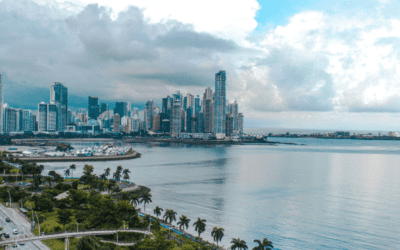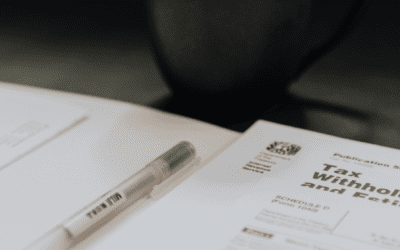Dateline: Scottsdale, United States
Investors profit by identifying long term trends before the crowd does. In this current world, one is either a contrarian or a victim.
If one looks between the lines of the record high stock markets, rising cost of living, the record high bonds prices, the record high art sales and vehicles being sold, the low volatility, the bigger banks, the low rates that fuel all this speculation, and much more, there is a common denominator that holds everything together: the US dollar.
If one takes away that denominator, values and purchasing power across the entire board will collapse.
Dollar reserves fell from over 70% in 2000 to barely 60% today. The Fed’s balance sheet is loaded with bonds from manipulating the rate markets. Countries, led by China, are bypassing the dollar to continue trade with one another. And the middle east is becoming more unstable, along with Saudi Arabian ties being contested.
These are all negative for the trend taking place: a future without the US dollar as a reserve currency.
Historically speaking, many other countries held the reserve currency role. Before America it was Britain and before them it was France and before them, it was the Netherlands. And so forth.
The case could be made that the minority making preparations against the demise of their respective currency were ridiculed. But the intelligent investor does not listen to adversaries with emotions, but logic and rationale.
I discuss the three legs of the US dollar’s dominance and how each leg is being pulled out from underneath by external and internal forces. It is a minority position currently, but as history and logic will explain, it is something that deserves attention for all dollar-denominated investors.
It is never too early to change, but it can certainly be too late.
Leg Number 1: The Petrodollars Beginning and Demise
I. The Beginning
The date was 1971 when Richard Nixon announced that America would not be able to meet their obligations and ended the dollars backing by gold. In more simplistic terms, America defaulted and the value of the dollar came under substantial pressure. With equities real values being desecrated, GDP plummeting, unemployment and the general cost of living increasing as wages declined, a term was forged to describe America – stagflation.
Stagflation is a condition of slow economic growth and relatively high unemployment – a time of stagnation – accompanied by a rise in prices, or inflation.
With the dollar weakening against other currencies now free-floating, something had to be done to bring back demand for the ever-increasing supply of dollars.
Enter 1973 with then-Secretary of State Henry Kissinger. The bargain was intriguing: America had the world’s strongest military and Saudi Arabia exported the world’s most oil.
Mr. Kissinger charismatically and strategically persuaded the Saudi Arabian King to exclusively sell oil globally in dollars only. The demand for US dollars was now deemed irresistible, a complete turn of sentiment from only a couple years earlier.
The US could now run its massive trade deficits (since 1975 America has never ran a trade surplus) without worry of their dollar demand declining. A short series of events went as followed: countries needed oil for their economies. Nations would export goods to the United States for the dollars.
In turn, they would exchange the dollars with Saudi Arabia and receive oil.
Adding insult to injury towards the rest of the world, the OPEC (oil-petroleum exporting) countries took their dollar profits and reinvested them into America’s bond market for yield.
The decreased borrowing costs along with increased funds ready to buy American debt i.e. bonds, while simultaneously running trade deficits to finance the governments without financial repercussions, the US was having their cake and eating it in the simplest of words.
II. The End
Investors should have no problem connecting recent history of American military action in the Middle East to the 1973 petrodollar deal with Saudi Arabia. First “we” invaded Iraq under the false guise of weapons of mass destruction. Heck, where does one think they received those weapons of mass destruction in the first place?
Second was Egypt, which America had supported for over 30 years and financed former dictator Hosni Mubarak with over $60 billion dollars, which in 2011 the US helped provide assistance in overthrowing the same Mr. Mubarak that we had supported years prior.
Third was Libya where we helped topple former ally Muammar Gaddafi. There are many speculations of why America was bombing the same Libyan military that the US-trained and funded. But one can conclude it was in American, Israeli and Saudi Arabian national interest.
Now and currently it is Syria that The Land of the Free is dealing with. The Saudi Arabian King was very vocal about the bombings that were called off in 2013 against the Syrian dictator, Bashar al-Assad.
For Saudi Arabia, Syria had become a focal frontline with regards to gain regional influence with Iran, Mr. Assad’s ally. Now the US, under the agreement made in 1973, is doing what it can to bring down Assad or risk losing the dollars prestige of the petrodollar.
The US and Saudi Arabia are even supplying arms, funding, and training to the Syrian rebels that are turning right around and using them against the Western influences with terrorist groups such as al Qaeda, Hezbollah, and the new and dangerous ISIS.
The US and Iran have had warming ties with one another. Saudi Arabia and Iran are enemies. This is not something that the Saudis agreed upon with the Petrodollar deal and is causing strain between the two long-time allies.
As of recently, the OPEC nations – led by Saudi Arabia – have been artificially pushing the price of oil down. Investors should see that the Syrian regimes backers i.e. Russia and Iran are suffering with the lower oil prices.
But conversely, the biggest damage is being directed towards the US.
Five out of the ten fastest-growing economies in the USA are oil-producing states. In fact, it would be safe to claim that the entire growth since the 2008 recession has been from the energy sector.
American fracking and shale oil wells are marginal and high-cost producers unlike the conventional oil producers in Saudi Arabia. Investors need to critically think and ask themselves questions.
Is Saudi Arabia purposely hindering the US energy boom in fears that if America becomes oil independent they can disband protecting Saudi interest?
Or are America and Saudi Arabia working together to temporarily kill their profits all in the ambition to hurt Russia and Iran?
Maybe Saudi Arabia is pushing oil prices down to help China purchase more oil?
China does supply Saudi Arabia with most of their military arms and with the conflict increasing in the middle east and Syrian rebels (which are Saudi backed) needing weaponry, could this be an agreement for cheap oil prices and arms?
Investors speculating on the cause of why oil is collapsing theorize that this is Saudi Arabia’s way of exerting its dominance and for the rest of the world to not forget who produces the low-cost oil.
It would make sense that Saudi Arabia is defending its market share, hurting its competitors such as Iran and Russia, and also keeping America at its mercy.
The reason being arbitrary, there is one long term trend taking place: the petrodollar has become unstable just as the countries in the middle east have become. A single currency and country controlling the global oil costs will not last another 40 years.
Leg Number 2: Countries Bypassing the Dollar
Russia and China signed a massive energy deal over the summer. A $400 billion contract for Russia to supply China with gas.
If that was not monumental enough, the two nations signed another agreement in November.
What is important to note between the lines is that the countries will bypass the US dollar and pay each other in their domestic currencies. With Russia’s rich abundance of resources and the Chinese low-cost labor and manufacturing business, this will be a critical relationship in the future.
The emerging-market BRICS – made up of Brazil, Russia, India, China, and South Africa – have started bypassing the dollar altogether. The nations have established a competitor to the Western-backed IMF, The New Development Bank.
The Eastern hemisphere and leadership are growing with an anti-dollar alliance.
Investors will understand that this was an inevitable sequence bound to happen sooner than later. With the sanctions America has imposed on countries such as Iran and Russia, the rest of the developing world does not want their growth hindered by American imperialism.
In fact, there are 23 (60% of the world’s GDP) countries that are setting up swap lines that bypass the dollar and SWIFT payment system, the dollar-based worldwide transaction network. The countries that are setting up swap lines are also US allies such as Germany, France, and the UK.
Here is a list of swap line examples that bypass the dollar and will lead to a reserve currency collapse…
March 22, 2012 – Australia and China agreed to a 30bln AUD / 200bln Yuan swap line agreement.
March 26, 2013 – Brazil and China set up a currency swap line for 60bln BRL / 190 bln Yuan.
June 22, 2013 – Britain officially set up a currency swap line with China for 2 bln GBP/ 200bln Yuan.
October 9, 2013 – The European Union created a swap line with China for 45bln EUR/ 350 bln Yuan.
November 8, 2104 – Canada and China have agreed upon a 30bln CAD/ 200 bln Yuan currency swap.
It should be obvious that the Chinese are having other central banks hold the Yuan in their reserves.
Since 2008, a weak US economy has contributed to the decline of global dollar reserves and created opportunities for the rest of the world. This has resulted in a decline of American influence globally and increased the momentum for a de-dollarized world.
The dollar’s dominance was carried over four decades due to the ability to purchase Saudi oil with paper money.
As investors saw in part one, the Saudi Kingdom is preparing for a new global system and unrest in the middle east. And the world now seeing the powerful China and Russian gas relations, countries can now begin to sell their commodities to other countries in their own domestic currencies without the degradation from American pressure in foreign policy.
Leg Number 3: Welfare State and Inflation
Without the petrodollars’ oil use propping up demand for the US dollar, the currency would be within its last breath. Investors looking at the long term prospects of their purchasing power in America see a dismal future. Here are some focal points that validate a bearish US dollar trend thesis:
America has never run a trade surplus since the mid-1970’s. Americans are chronic debtors. The only way for the US to meet obligations for its unbalanced budget is to borrow money abroad or print its currency to fund the treasury.
The children of the baby boom generation (late 1940’s) are entering retirement. They will leave the workforce, and with US savings all but nonexistent, more and more individuals will depend on a thinning social security balance. And whichever retirees do have savings, there are no more yields for residual income as prices continue to rise through inflation.
The young adults, that the government desperately needs working and paying into the social security pools for the elderly, have succumbed themselves into deep debt ($29,400 average college debt loan) to pay for college in which after graduation they cannot find work.
A record number of collegiate graduate students are living with their parents as the interest on their debts steadily increases.
Debts such as corporate borrowing, student loans, auto loans, mortgages, credit cards, and the US national debt are at unsustainable heights relative to income and are only getting worse.
The economy is hooked on to 0% rates thanks to a zero interest rate policy.
If the US is barely surviving at 0% rates, how could the nation thrive at 2-5% historically normal rates?
The Federal Reserve is fighting an alleged war on deflation; which means to create inflation. Savers will be damaged the most with the added monetary easing. For instance, if 10-year bonds are giving investors 2.5% and inflation is at 3%, real returns would be -0.5%. Not only are savers receiving mediocre yields for income, but they are actually losing money.
With the wars and welfare state growing and real incomes declining, how does one expect to pay for this disgruntled and fattening government? Assets and savings are all but disappeared for Americans, besides the 1% being enriched from the quantitative easing, and the middle class is being squeezed into non-existence.
It should be clear to intelligent investors that the US is not in a cyclical decline, but a structural decline. Crude macro-monetary tools, such as rate cuts and monetary printing i.e. QE, used to try resisting cyclical downturns are not working but in fact, making the inevitable structural collapse more detrimental within our complex financial system.
Finale
The logic should be simple: the countries of the world are bypassing the dollar’s hegemony.
Saudi Arabia is re-thinking the American allegiance. America has no choice but to continue monetary easing as it cannot finance its budgets otherwise and needs the lower borrowing costs for current and future debts. Dollar reserves are decreasing rapidly as countries do not want exposure to a bullying American foreign policy and an inflating currency with no yield.
Foreign countries are also aware of the end of the road for US consumers and investor bailouts.
Historically speaking, in 1998 Wall Street had bailed out the hedge fund, Long Term Capital Management, and the banks which had lent to the hedge fund that almost brought down the US banking sector.
In the late 2000’s, it was the Fed and US government that bailed out Wall Street and the insurance companies, along with the banks again. Now that the Feds balance sheet is overleveraged and filled with toxic assets, if another crisis were to commence, who would bail the Fed out?
Not one single event will cause the US dollar to fall, but a series of what the investor has just read about taking place will dethrone King Dollar. The three legs of the dollar’s decades of dominance are weakening – these are long term trends that cannot be avoided.
In the end, simple supply and demand will dictate all: weaker demand from nations bypassing the US dollar will lead to a further decline in its value on top of the weakening US structural fundamentals and trillions in Fed liquidity.
Unfortunately for the rest of us, it is as if there is an invisible loaded gun pointing at our heads.









